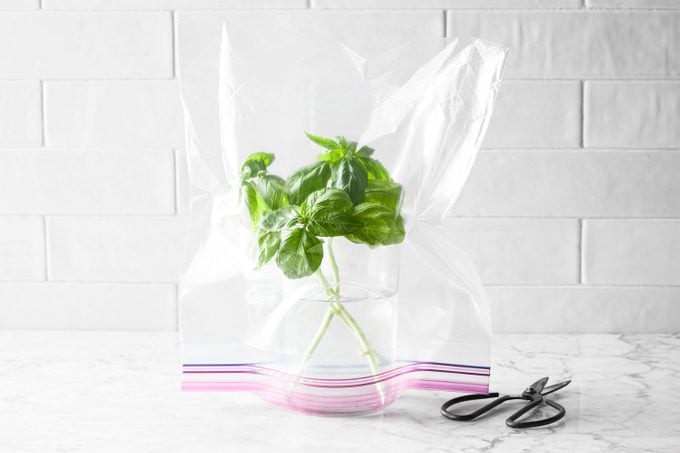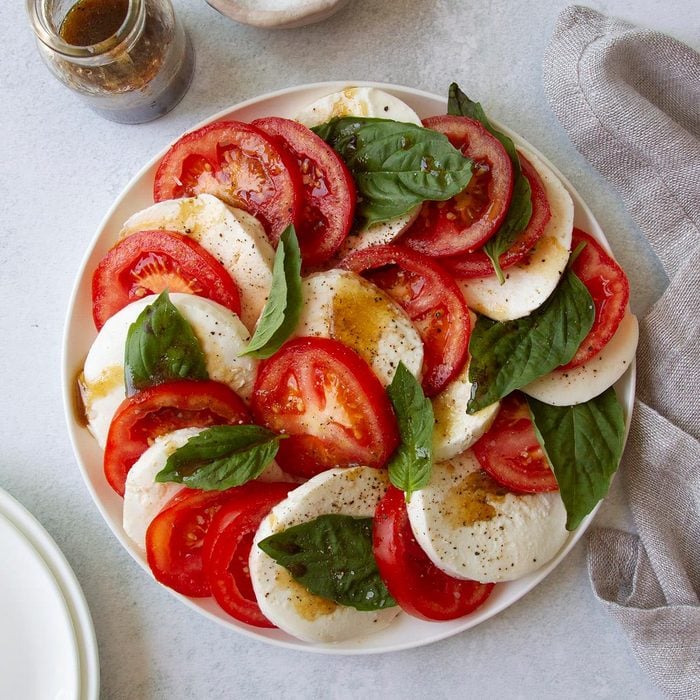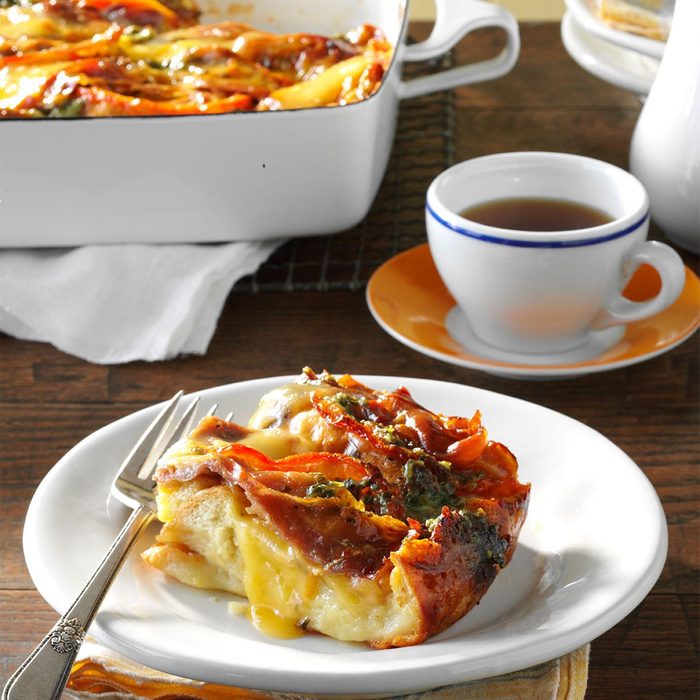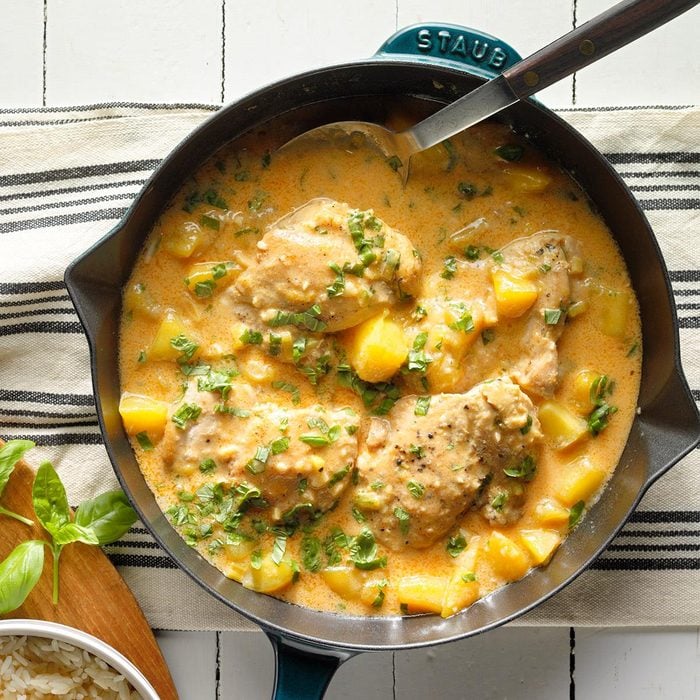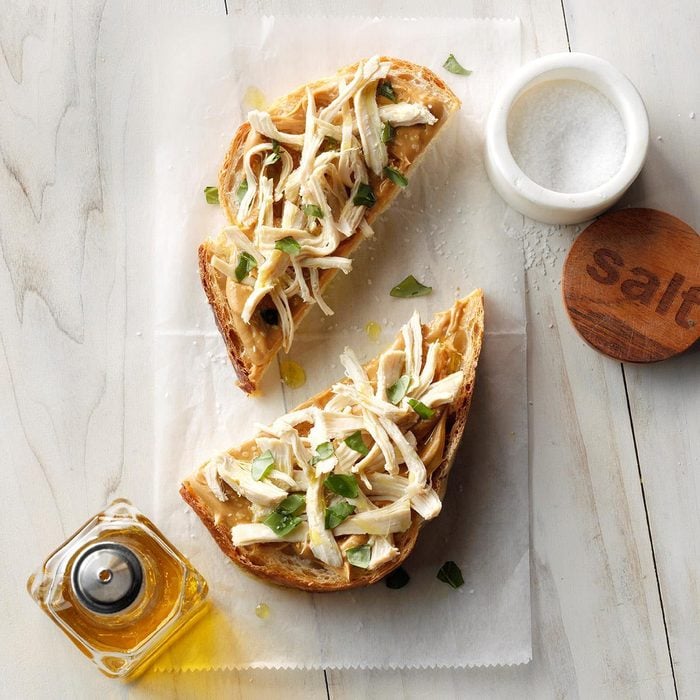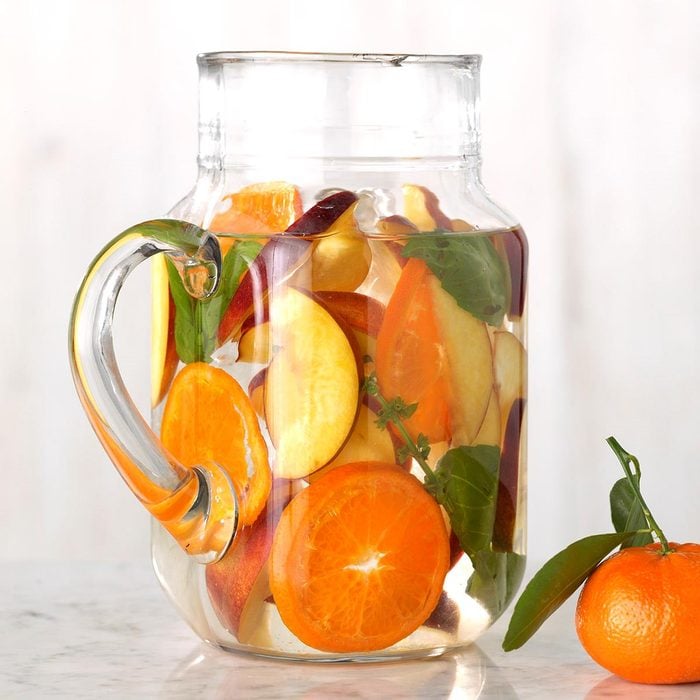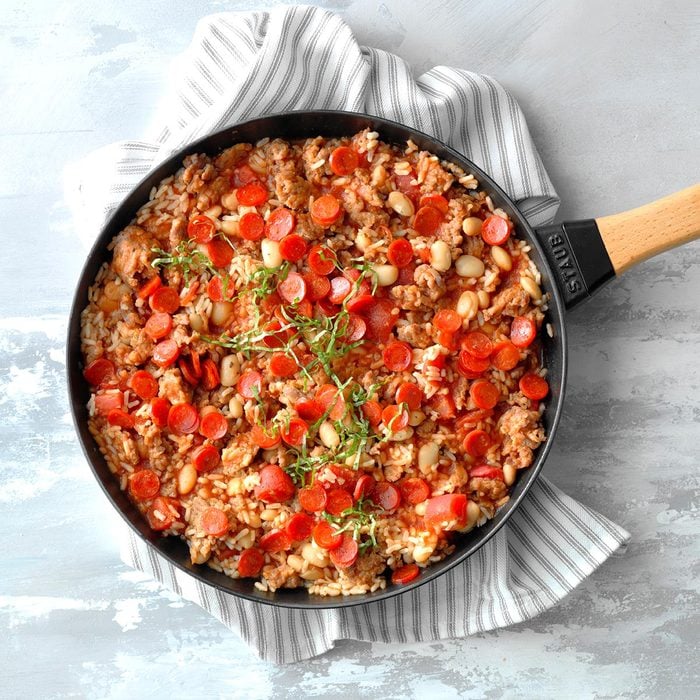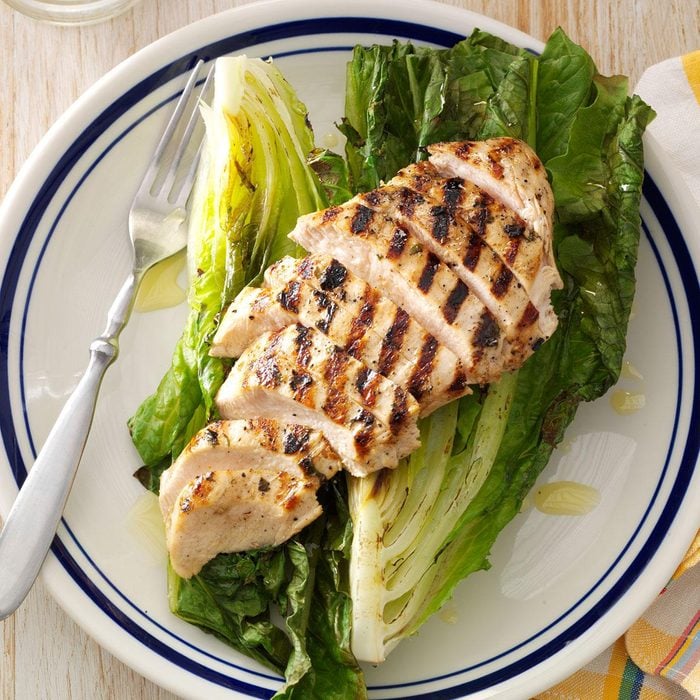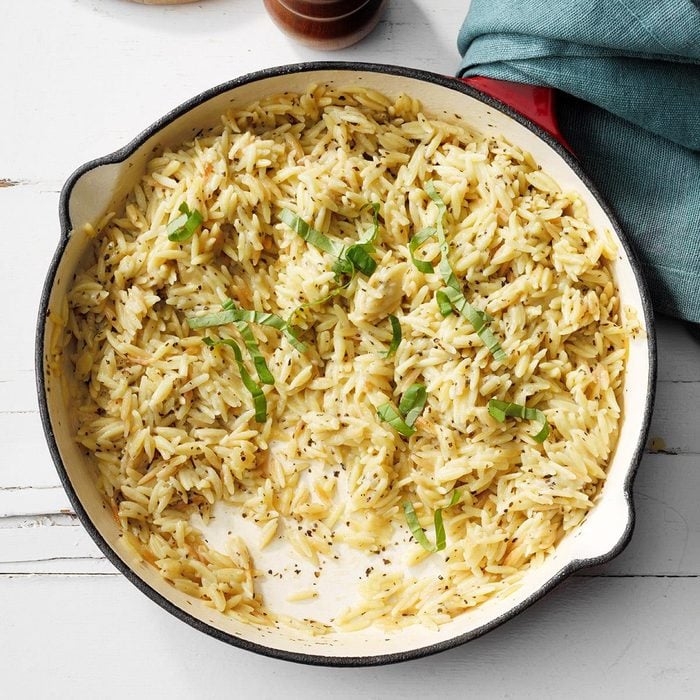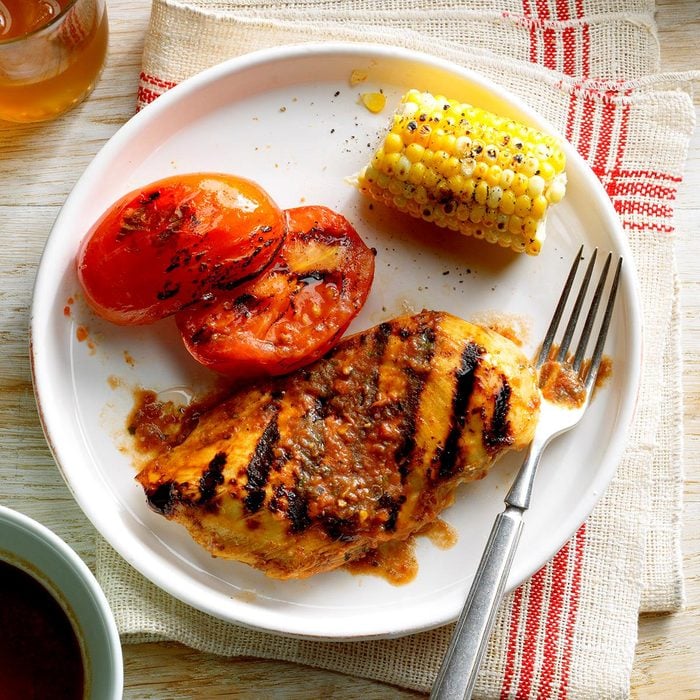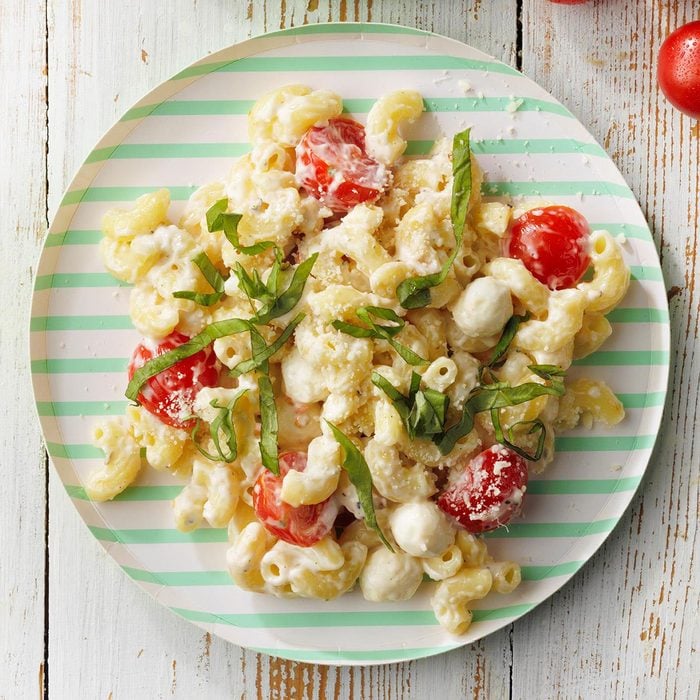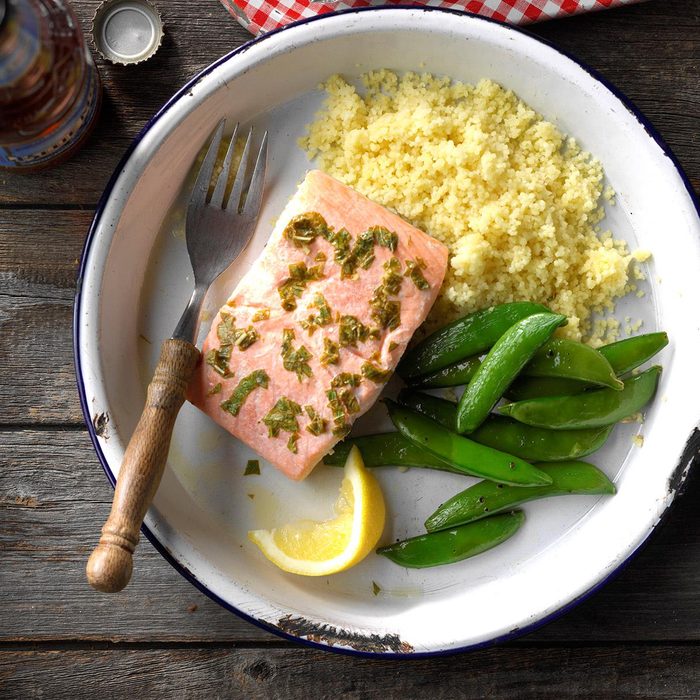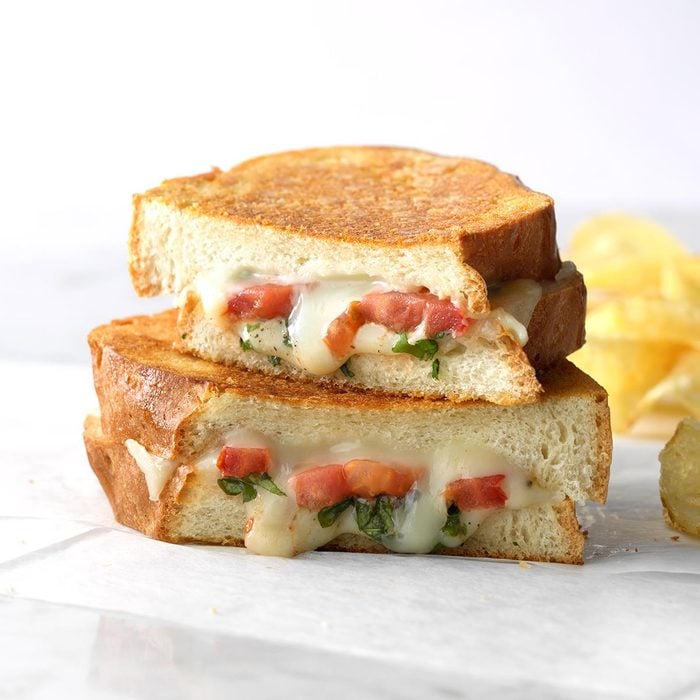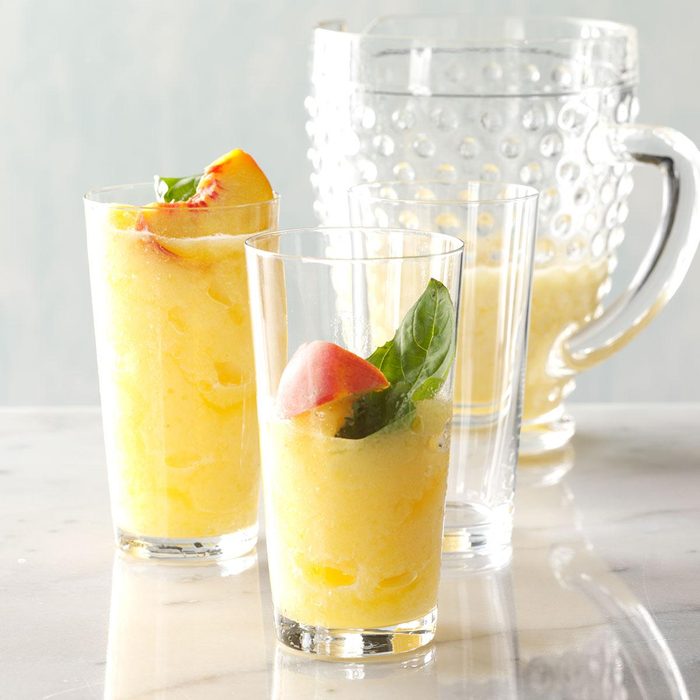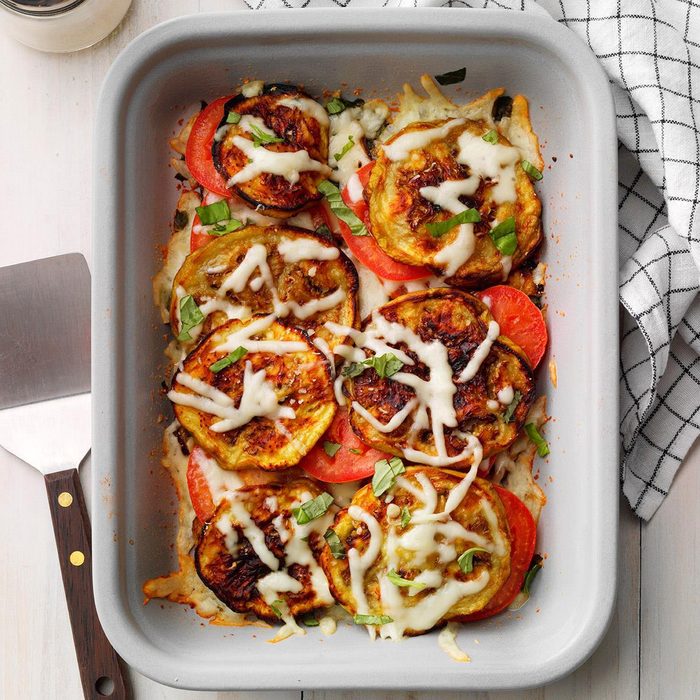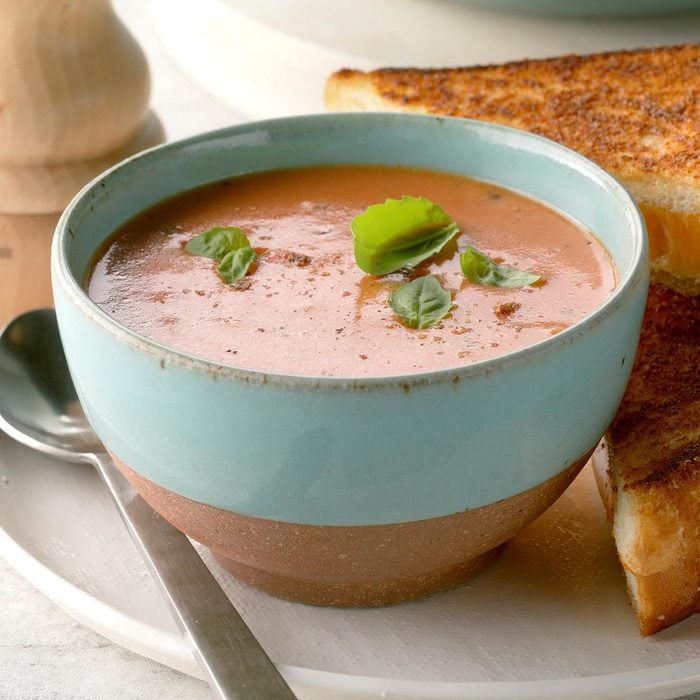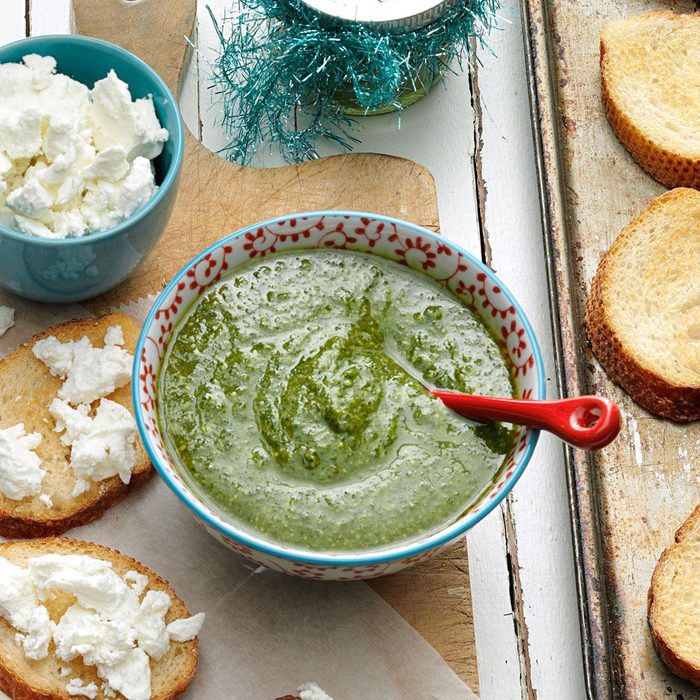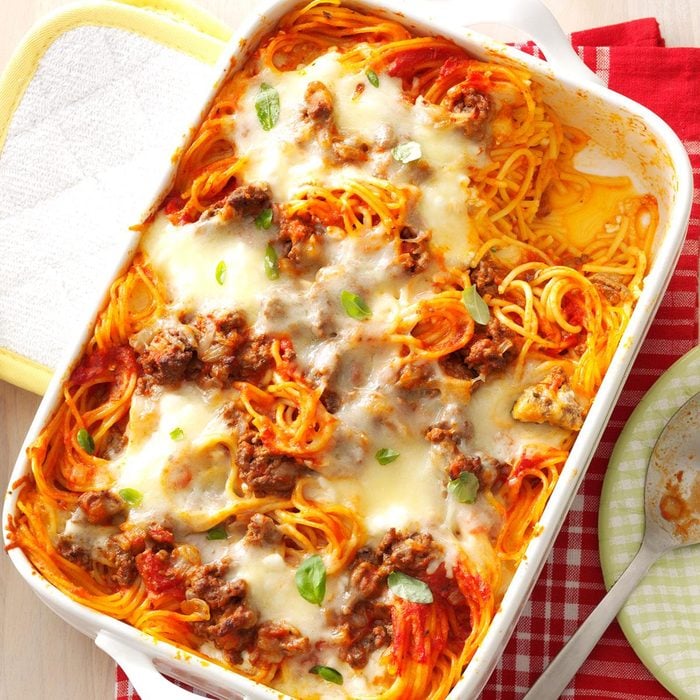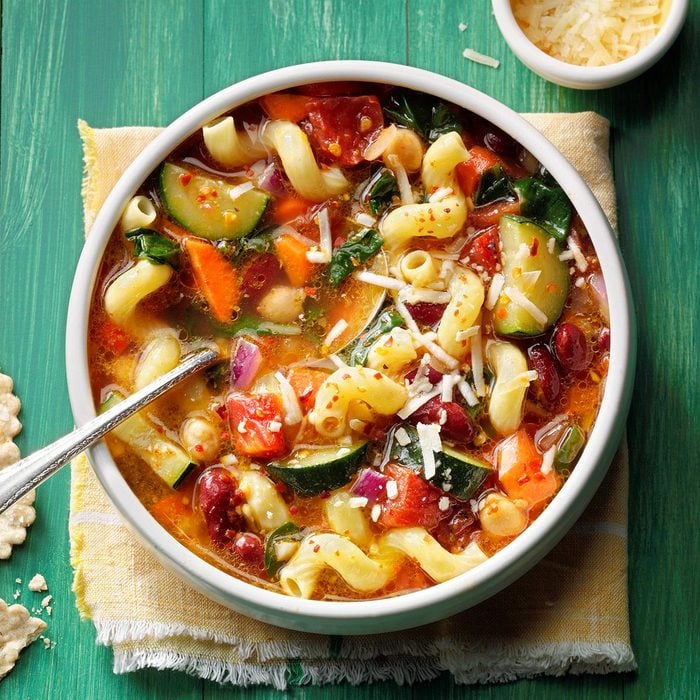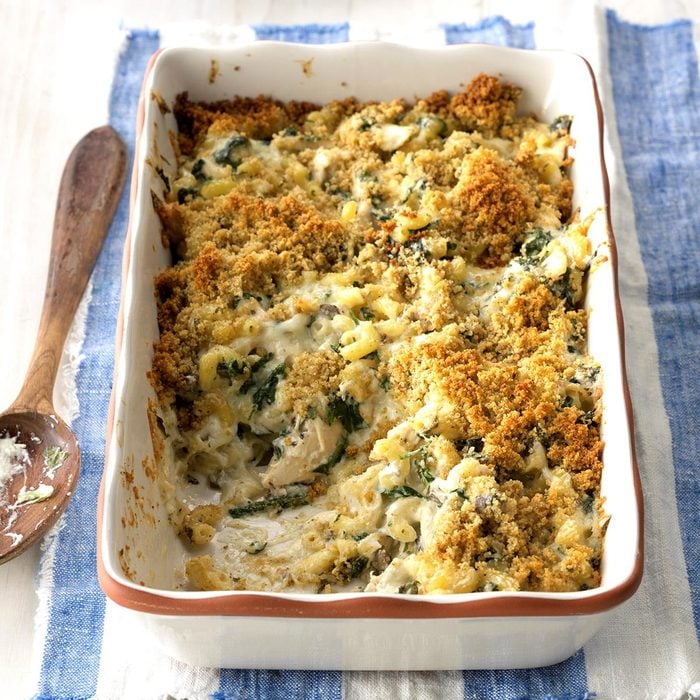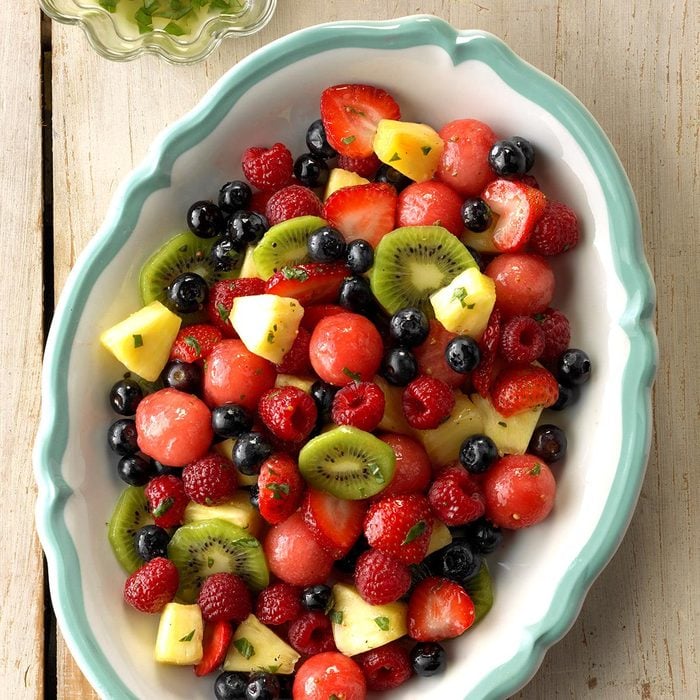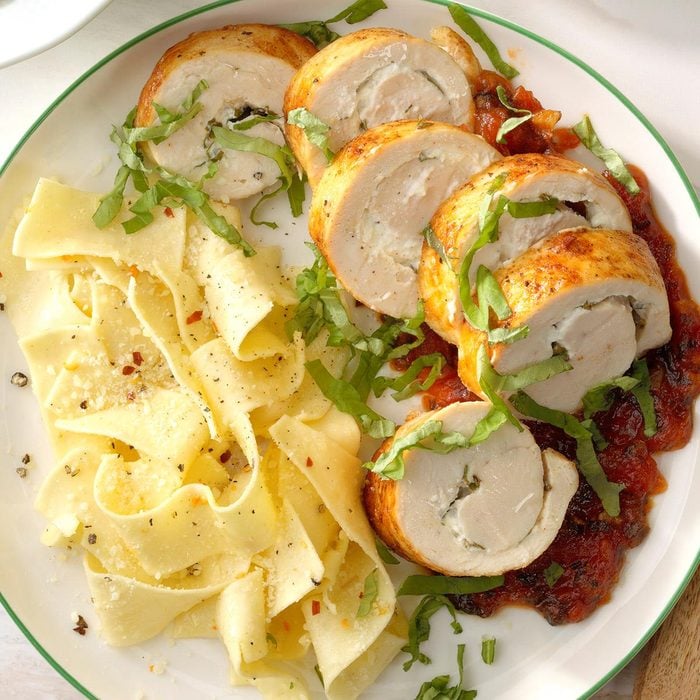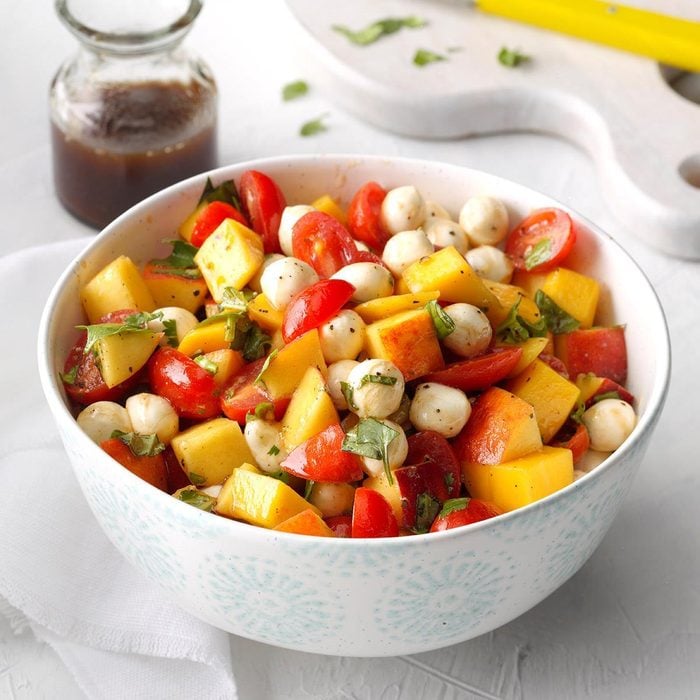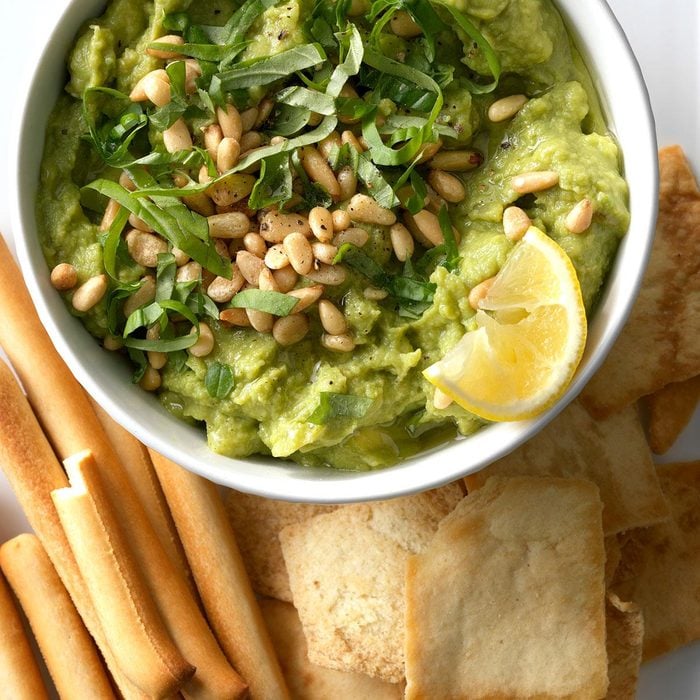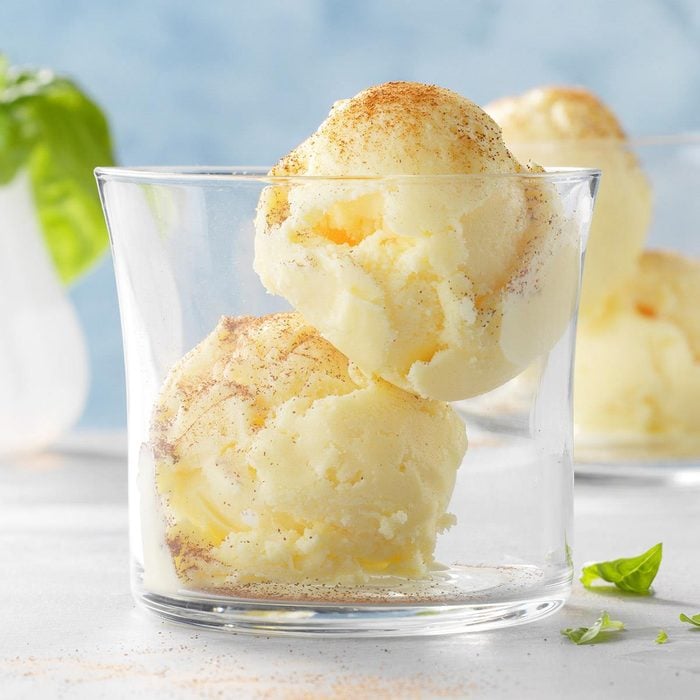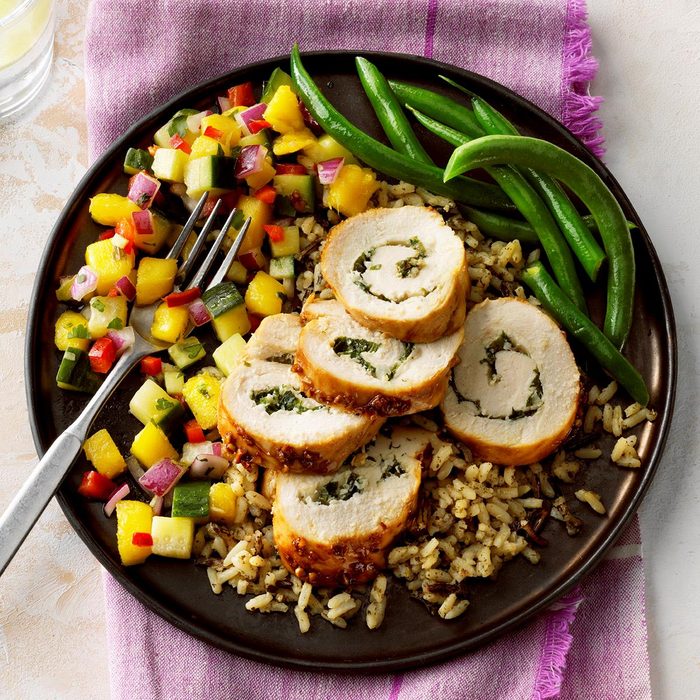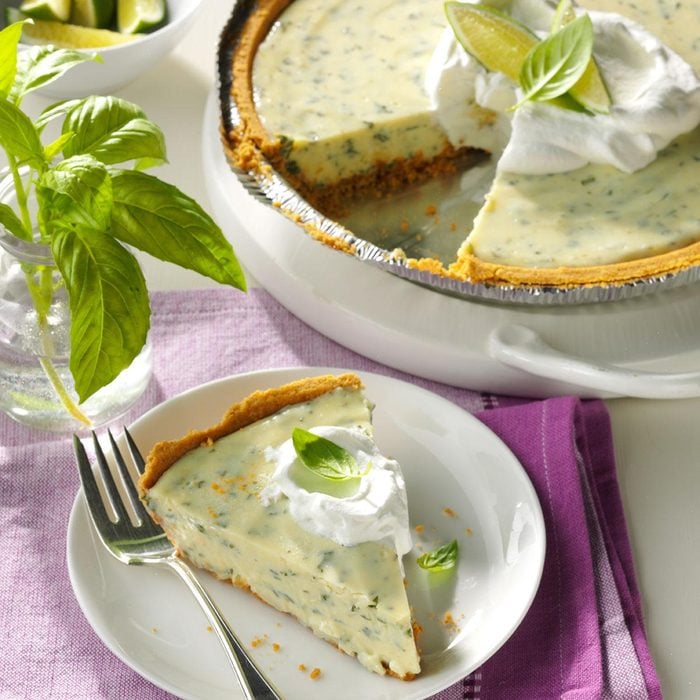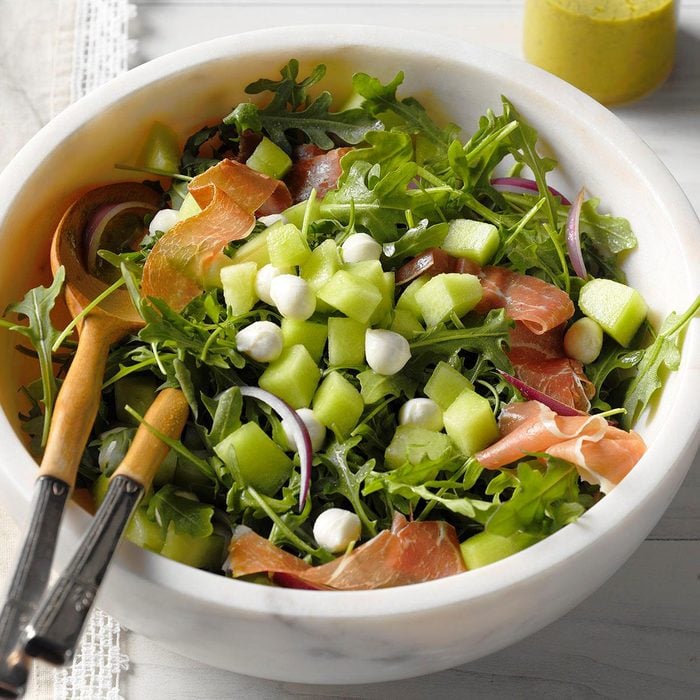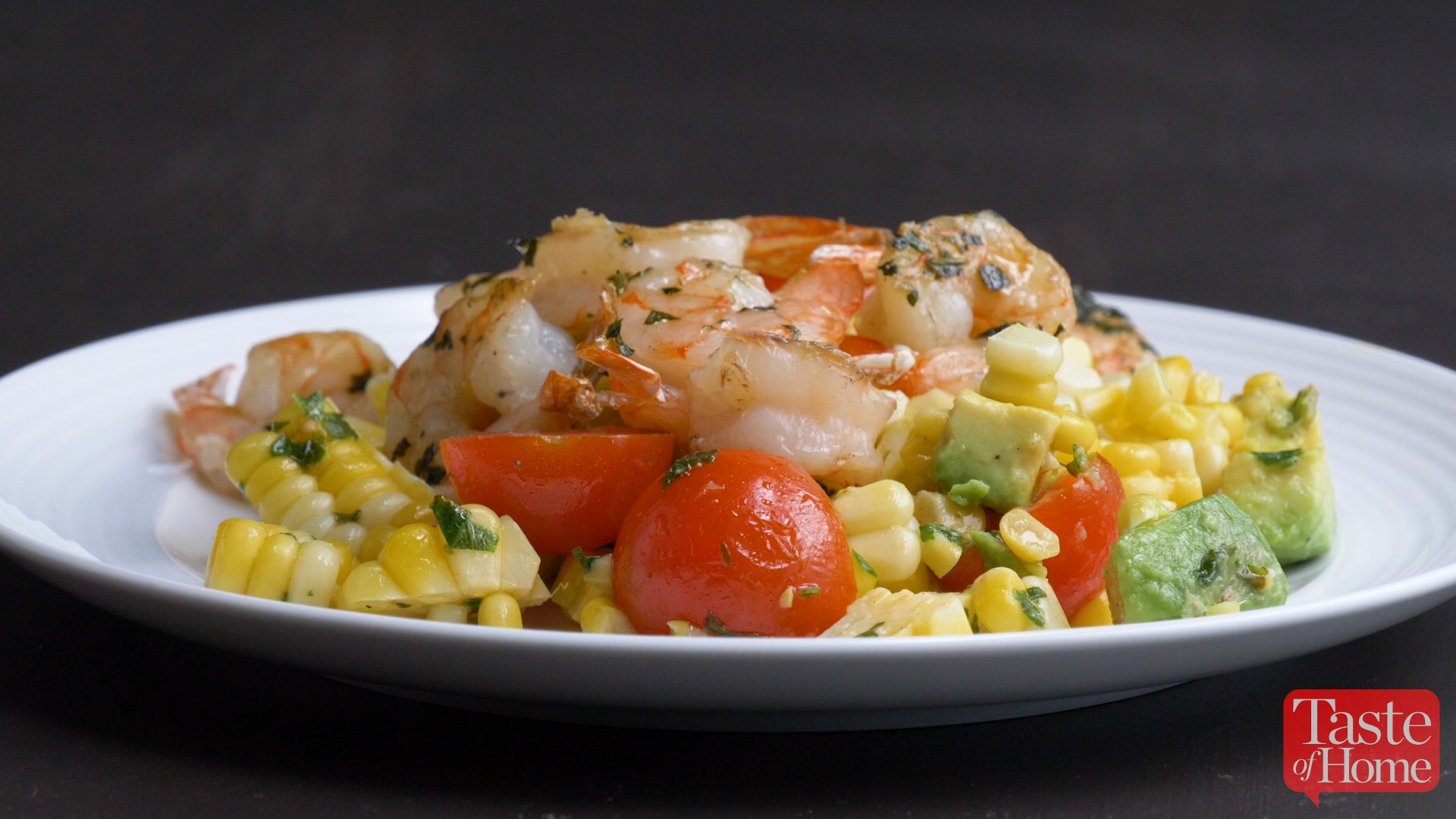 Pesto Corn Salad with Shrimp
Pesto Corn Salad with Shrimp
This recipe showcases the beautiful bounty of summer with its fresh corn, tomatoes and delicious basil. Prevent browning by spritzing the salad with lemon juice. —Deena Bowen, Chico, California
Go to Recipe
Caprese SaladMy husband and I love Caprese salad, but not the high prices we pay for it in restaurants. Here, we created our own version which tastes incredibly close, if not better, than any restaurant version we've tried. —Melissa Pearson, Sandy, Utah
Bella Basil Raspberry TeaGive iced tea a grown-up twist. Fragrant basil lends flavor and the raspberries give it a bright red color. Tou’ll love the fun fizz and make-ahead convenience! —Laurie Bock Lynden, Washington
Prosciutto-Pesto Breakfast StrataI'd never tried prosciutto before this recipe, and it instantly made me a die-hard fan! The layers of flavor in this dish are brilliant, making it well worth the time and a must for your recipe box. Leftover pesto? Use it up in these
recipes using pesto. —Vicki Anderson, Farmington, Minnesota
Mango Chicken Thighs with Basil-Coconut SauceThis recipe brings the restaurant to my home kitchen. And it’s easy, too! The meal comes together quickly and fills my kitchen with wonderful aromas. If there are any leftovers, they're just as good reheated the next day. —Kathi Jones-DelMonte, Rochester, New York
Peanut Butter, Chicken and Basil SandwichStay with me, here. These classic Thai flavors work on so much more than noodles...try 'em on a sandwich and you won't be disappointed. —
James Schend,
Dairy Freed. Looking for more recipes? Learn how to make
Thai basil chicken.
Sue’s Spicy Tomato Basil TortelliniA friend remarked about a similar baked tortellini dish at a restaurant, so I wanted to try re-creating it for her at home. My stovetop version makes it weeknight easy. —Cynthia Gerken, Naples, Florida
Basil Tomato TartI received this tomato tart recipe from a good friend of mine. It's a fun way to use up fresh tomatoes from the garden, and it reminds me a lot of pizza.—Connie Stumpf, North Myrtle Beach, South Carolina
Shrimp Pesto PastaGarden-fresh basil and plump shrimp combine for a shrimp pesto pasta bursting with alfresco vibes.
Nectarine, Basil and Clementine Infused WaterNectarine and basil may sound a little strange, but trust us, this combination is a real winner. A few slices of clementine seal the deal. —Taste of Home Test Kitchen
Grilled BruschettaThis is my go-to appetizer in the summer when tomatoes and basil are fresh from the garden. The balsamic glaze takes this bruschetta recipe over the top. I like to use a Tuscan herb- or basil-infused olive oil for this. But, it's great with just plain olive oil, too. —Brittany Allyn, Mesa, Arizona
Meat Lover's Pizza Rice SkilletFor a quick dinner, I threw this together from what I had in the fridge and pantry. Add any other pizza toppings you desire. I often add black olive slices or mushrooms. My son loves this and calls it pizza rice. —Teri Rasey, Cadillac, Michigan
BLT Quinoa BowlsI absolutely love a BLT with sliced avocado and an egg. Recently, I've been trying out grain bowls, and I thought the flavors of my favorite sandwich would work really well. My family agreed! —Elisabeth Larsen, Pleasant Grove, Utah
Italian Cloud EggsDrop egg yolks on nests of whipped Italian-seasoned egg whites, then bake in a cast-iron skillet. Dreamy!—Matthew Hass, Franklin, Wisconsin
Chicken Pesto MeatballsThese tender, pesto-stuffed meatballs get gobbled up in our house. They're short on ingredients, but packed with flavor. I always make a double batch, freezing the other half for a busy night. —Ally Billhorn, Wilton, Iowa
Grilled Basil ChickenThis cinch of a marinade gives the chicken lots of Italian flavor. Serve the chicken with a tossed green salad and garlic breadsticks, or put slices on a ciabatta roll along with lettuce, tomato and mozzarella cheese for a zesty handheld meal. —Lisa Moriarty, Wilton, New Hampshire
Orzo with Parmesan & BasilDried basil adds its rich herb flavor to this creamy and delicious skillet side dish that's table-ready in just minutes! —Anna Chaney, Antigo, Wisconsin
Marinated TomatoesIn just about 10 minutes, you can prepare these tasty marinated tomatoes, a quick, light and family-friendly recipe.
Shrimp Pasta PrimaveraThis no-stress shrimp pasta primavera highlights the flavors of spring with the freshest seasonal veggies. It's a weeknight-friendly meal that'll get you fed quickly, so you can go out and enjoy the warm weather.
Grilled Basil Chicken and TomatoesRelax after work with a cold drink while this savory chicken marinates in an herby tomato blend for an hour, then toss it on the grill. It tastes just like summer. —Laura Lunardi, West Chester, Pennsylvania
Caprese Pasta SaladWhen life hands you tomatoes, make... Caprese pasta salad. It captures the flavors of the classic Italian salad in a more durable form, perfect for taking to block parties and barbecues.
Lemon Basil SalmonMy husband came up with this easy, foil-packet recipe for flaky, fork-tender salmon. This recipe is a winner. —Marianne Bauman Modesto, CA
Lemon Chicken OrzoLemon chicken orzo is a one-pot wonder. It's easy enough to make for a weeknight meal, but fancy enough to serve for guests. Customize it with different pasta shapes and your favorite vegetables.
Caprese SkewersLight, satisfying and healthful in one impossibly easy-to-make dish? Yes, please! Enjoy these Caprese skewers as an app, side dish—truly perfect paired with grilled meat or poultry—or a convenient snack. Every bite is a little taste of summer.
Basil-Tomato Grilled CheeseThe tastes of summer abound in this easy Italian-style grilled cheese sandwich. Not only is it delicious, it's super-fast, so you can get back to those summer outdoor activities. —Sylvia Schmitt, Sun City, Arizona
Cherry Tomato & Basil FocacciaWhen I had 80 pounds of tomatoes, I got creative incorporating them into meals. Sometimes I slice this loaf into squares to make sandwiches with fresh mozzarella cheese and deli meats. —Katie Ferrier, Houston, Texas
Peach-Basil Lemonade SlushThis chilly slush with peaches, lemon juice and garden-fresh basil is hands-down the best lemonade ever. It tastes just like summer. —Dana Hinck, Pensacola, Florida
Eggplant ParmesanWe really like eggplant and would rather have it baked than fried. This can be served as a side or a main dish. —Donna Wardlow-Keating, Omaha, Nebraska
Grilled Sausage-Basil PizzasWe love
basil recipes, and these easy little pizzas are a wonderful change of pace from the classic cookout menu. Let everybody go crazy with the toppings. —Lisa Speer, Palm Beach, Florida
Flavorful Tomato SoupA cookbook recipe called for ingredients I didn’t have on hand, so I improvised and came up with this. I often make it for friends at church, and I’ve shared the recipe many times.
-Jean Sullivan, Denver, Colorado
Caprese Chicken with BaconSmoky bacon, fresh basil, ripe tomatoes and gooey mozzarella top these appealing chicken breasts. —Tammy Hayden, Quincy, Michigan
Parsley PestoHomemade pesto always makes a thoughtful hostess gift. Mix things up with this parsley pesto variation. It's delicious served with pasta or in one of these
recipes using pesto. —Taste of Home Test Kitchen
Favorite Baked SpaghettiThis is my grandchildren's most-loved dish. It feels like a special dinner and is so cozy for cooler months. —Louise Miller, Westminster, Maryland
Over-the-Rainbow MinestroneThis vegetarian soup features a rainbow of vegetables. You can use any multicolored pasta in place of the spirals. —Crystal Schlueter, Northglenn, Colorado
Feta Tomato-Basil FishI rely on my husband for the main ingredient in this fuss-free dish. He fills our freezer after his summer fishing trip. —Alicia Szeszol, Lindenhurst, Illinois
Herbed Balsamic ChickenOur kitchen is tiny and cramped, so we try to grill simple (but tasty) meals outside as often as possible during the summer months. Dried herbs work as well, but during the summer use fresh herbs for the best taste. —Kelly Evans, Denton, Texas
Basil-Butter Steaks with Roasted PotatoesA few ingredients and 30 minutes are all you need for this incredibly satisfying meal. A simple basil butter gives these steaks a very special flavor. —
Taste of Home Test Kitchen
Apricots with Herbed Goat CheeseAfter ending up with bunches of apricots one summer, I created this quick and simple dish. My friends were blown away with its fresh taste and uniqueness. —Wendy Weidner, Ham Lake, Minnesota
Basil Citrus CocktailFruity, fantastic and lighter in calories! —Taste of Home Test Kitchen, Milwaukee, Wisconsin
Chicken Florentine CasseroleCreamy and comforting, this chicken and spinach bake is sure to be a hit at dinnertime. The toasty bread crumb topping delivers a bit of a crunch. —Dori Jackson, Gulf Breeze, Florida
Mixed Fruit with Lemon-Basil DressingA slightly savory dressing really complements the sweet fruit in this recipe. I also use the dressing on salad greens. —Dixie Terry, Goreville, Illinois
Spicy Shrimp Orzo with Lemon and BasilThis shrimp pasta is made in just one pot. Creating a broth with the shrimp shells is an extra step, but it's totally worth it for a flavorful final dish. The lemon adds a brightness that pairs well with fresh basil. —Ed Spangler, Timberlake, North Carolina
Basil Chicken with Smoked Tomato JamI grow my own herbs and veggies in the summer, and when they are at peak, I incorporate them into my recipes. This is one I developed using fresh basil, parsley and tomatoes when they were at their best and ripest. —Sheryl Little, Cabot, Arkansas
Peach Mango Caprese SaladSummer in the Midwest offers a bounty of fresh produce. I wanted to come up with a new recipe for the harvested goods, and this bright, flavorful salad is the refreshing end result. —Richard Robinson, Park Forest, Illinois
Pine Nut and Basil GuacamoleGuacamole is typically a Mexican dish, but that doesn’t mean you can't try to make it with other global flavors. For an Italian-inspired basil guacamole recipe, top it off with toasted pine nuts and fresh herb ribbons. You can also substitute the traditional lime for lemon juice.—
Taste of Home Test Kitchen
Cinnamon-Basil Ice CreamI started experimenting with herbal ice creams when I was teaching classes at our local college. Not only were the ice creams popular with my students, but my family loved them as well! One of our favorites is made with a variety of basil called cinnamon basil; however, unless you grow the variety yourself, it can be rather difficult to find. I decided to try to re-create the flavor, and this delicious basil ice cream recipe is the result! —Sue Gronholz, Beaver Dam, Wisconsin
Basil Chicken Spirals with Mango SalsaI love this recipe! It is one of my favorites to wow a crowd. Most of its wow factor comes from all the fresh ingredients. I always pick up fresh herbs, garlic, cucumbers, and hot peppers—as well as honey and onions when I can— at my local farmers market. All those ingredients give this dish a punch of flavor. —Noelle Myers, Grand Forks, North Dakota
Lime Basil PieThis sweet lime and basil dessert has a unique taste, plus less calories and fat than the traditional Key lime pie. —Samara Donald, Redmond, Washington.
Honeydew & Prosciutto SaladFor parties, I turn melon and prosciutto into an easy salad with a honey mustard dressing. To add zip, stir in fresh basil and mint. —Julie Merriman, Seattle, Washington
Grilled Eggplant Panini with Basil AioliI love being able to use the bounty of fresh vegetables and herbs from my garden for summer meals. This sandwich is loaded with veggies and has such a satisfying crunch. The melty provolone finishes things off perfectly. —Joseph A. Sciascia, San Mateo, California

